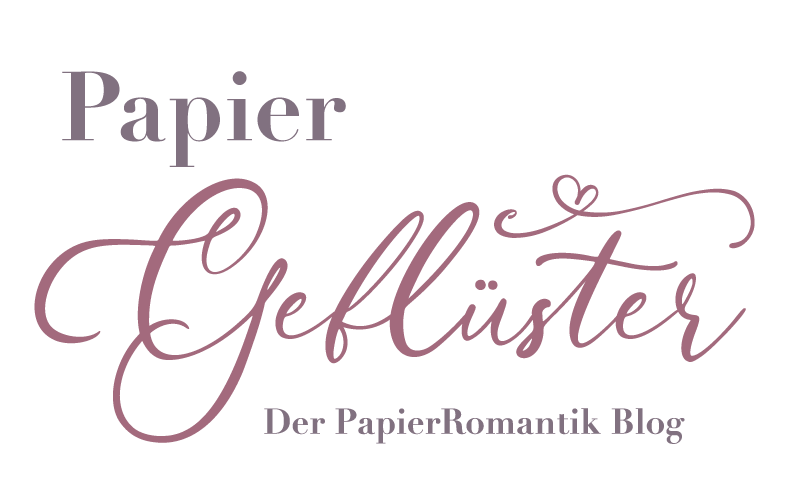
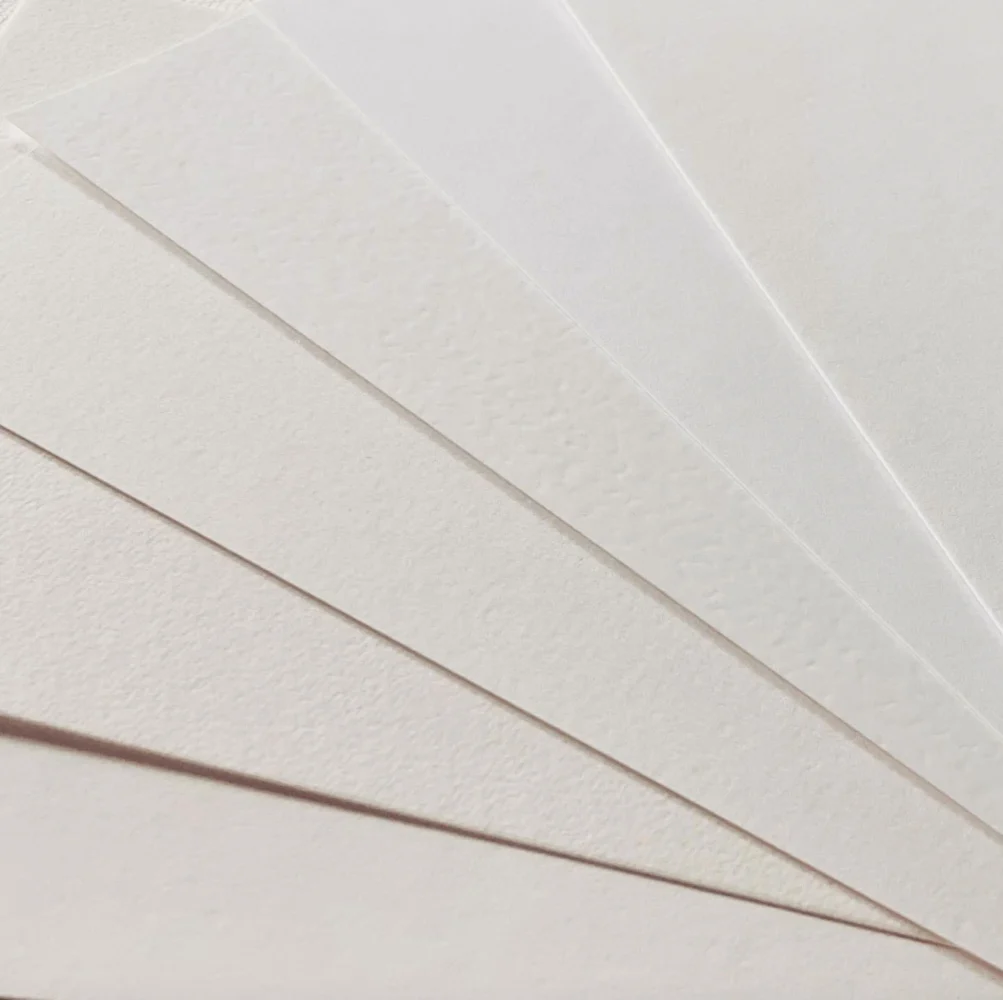
Wedding stationery plays a crucial role in creating an unforgettable wedding. Whether it’s save-the-date cards, invitations, menu cards, or thank-you notes – choosing the right paper can make the difference between ordinary printed materials and extraordinary keepsakes.
In this blog post, I’d like to provide you with a brief paper guide about three very special types of paper. I’ll also reveal my favorite paper and which papers are particularly well-suited for different purposes.
In general, you should use papers with a weight of at least 250g for your wedding stationery. The thicker the paper, the higher quality the entire stationery appears. My paper thicknesses start at 300g and go up to 900g.
Very often, wedding couples desire paper with texture. With its unique texture, it lends printed materials a touch of elegance and sophistication.
A major advantage of textured paper is its tactile quality. The fine or coarse surface structures offer a tangible texture that immediately makes the wedding stationery appealing.
The texture of the paper brings your design to life. Whether you have a romantic, rustic, or vintage wedding concept, textured paper adds an additional dimension to the overall impression. It provides depth and character, and can even enhance ‘simpler’ designs by creating interesting visual effects.
Textured paper is available in various variations, from subtle to more pronounced textures. The selection ranges from fine lines, delicate ribbing, embossed patterns, or even coarse fibers. Choose a texture that best reflects your individual style and wedding aesthetic.
The texture of the paper adds an additional visual depth to any printing process. Textured paper is a wonderful option for wedding stationery that combines elegance, charm, and uniqueness.

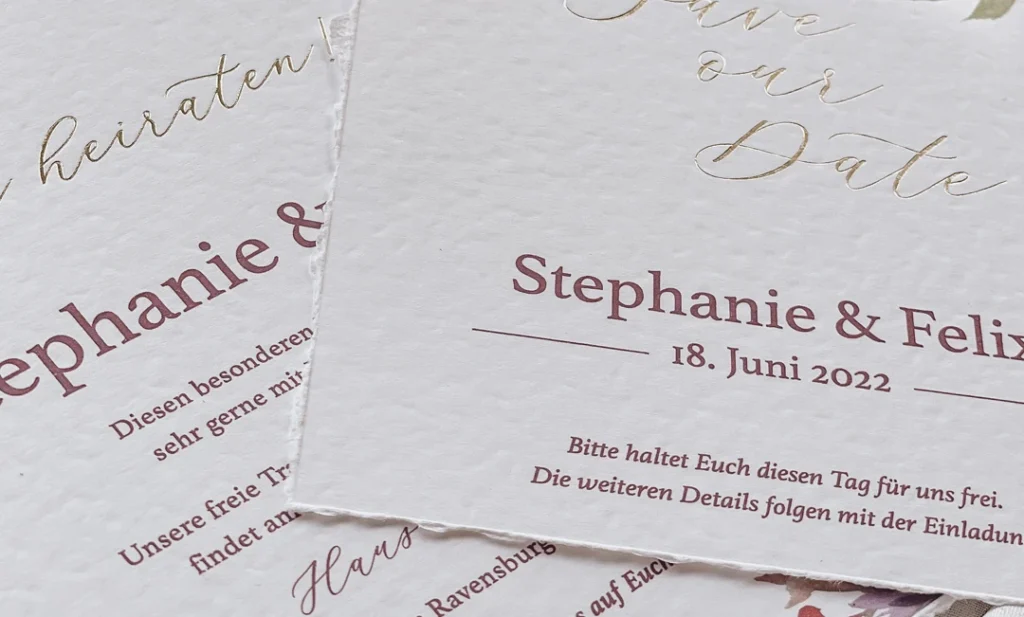
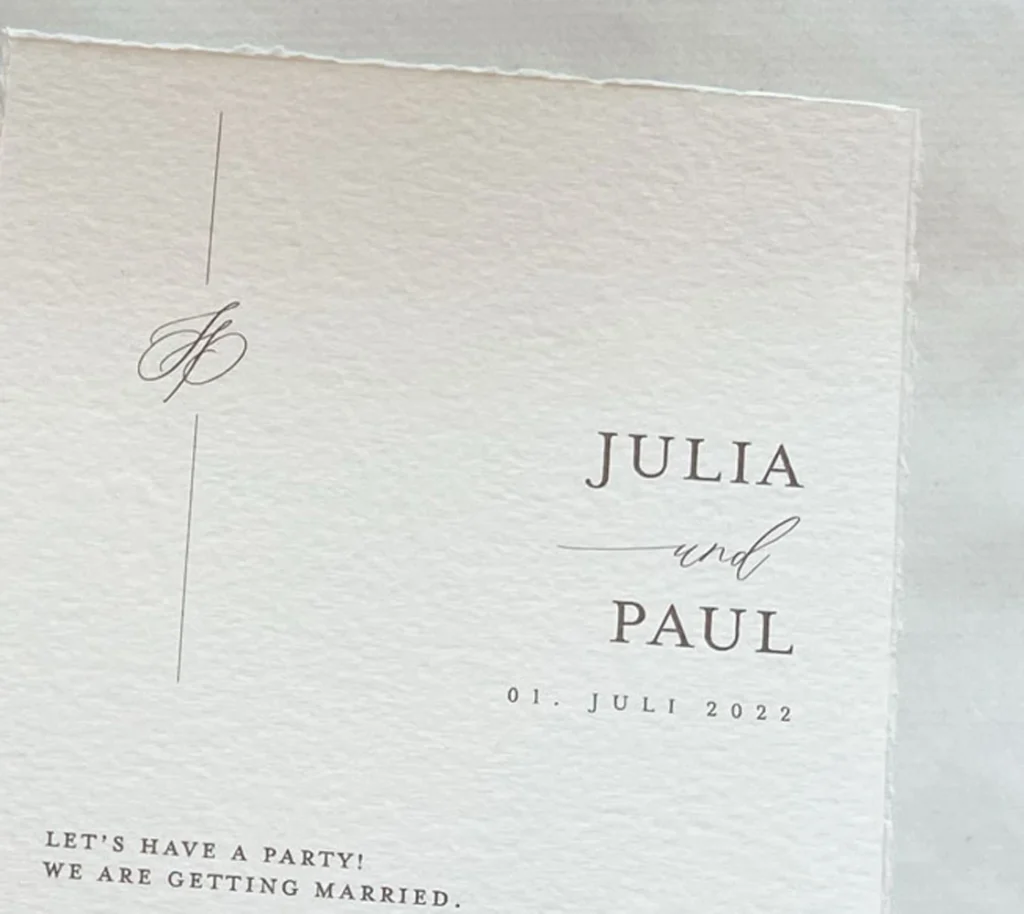
A particularly popular choice for couples looking for a natural and luxurious aesthetic is cotton paper.
Admittedly, the cotton paper that I use in 90% of cases is one of my absolute favorite papers. The paper I use has an almost velvety, soft surface and is perfectly suited for my favorite finishing technique – hot foil stamping. The thicker the paper, the deeper the embossing.
Cotton paper is made from recycled cotton fibers or from fibers of the cotton plant itself. Compared to conventional paper, it contains no wood-based fibers. It’s an environmentally friendly choice as it’s produced sustainably and consumes fewer resources, while simultaneously appearing absolutely luxurious.
Cotton paper is also known for its print quality. It absorbs ink well and ensures crisp print results. The smooth surface of the paper allows for high-resolution text representation.
Another advantage of cotton paper is its durability and longevity. It’s less susceptible to wear or yellowing compared to conventional paper. This means that your wedding stationery will still look fresh and beautiful even after years, allowing you to keep it as a lasting memory.
Cotton paper offers you a variety of customization options. It can be easily printed, embossed, die-cut, and even adorned with handwritten notes. It’s available in various thicknesses and colors, allowing you to make the right choice for you and your concept.
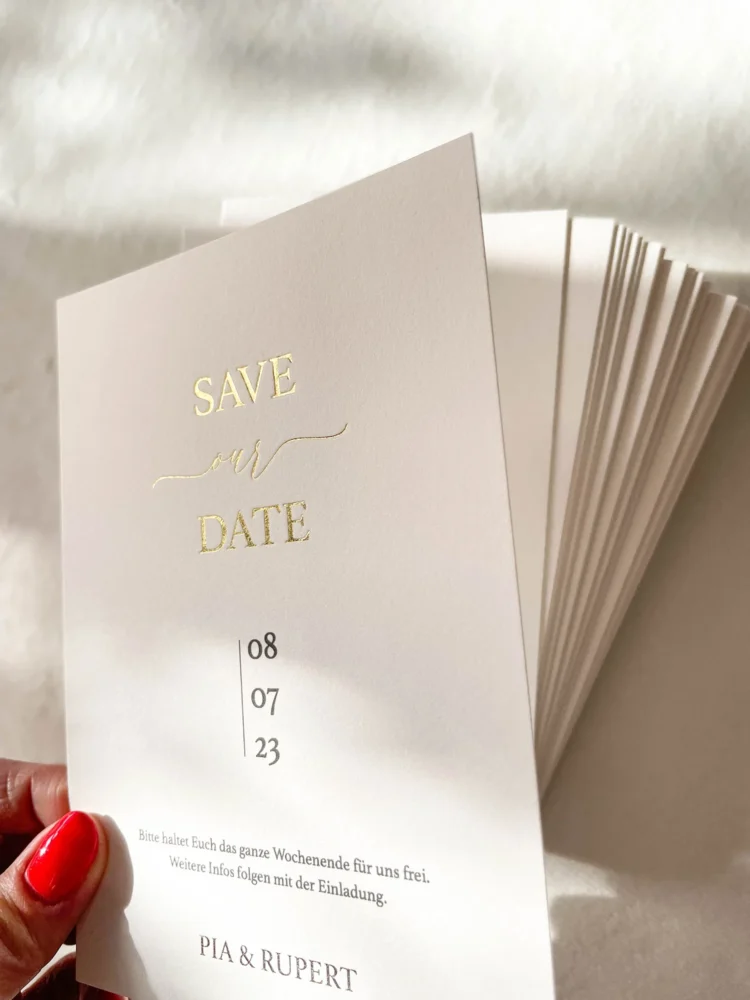

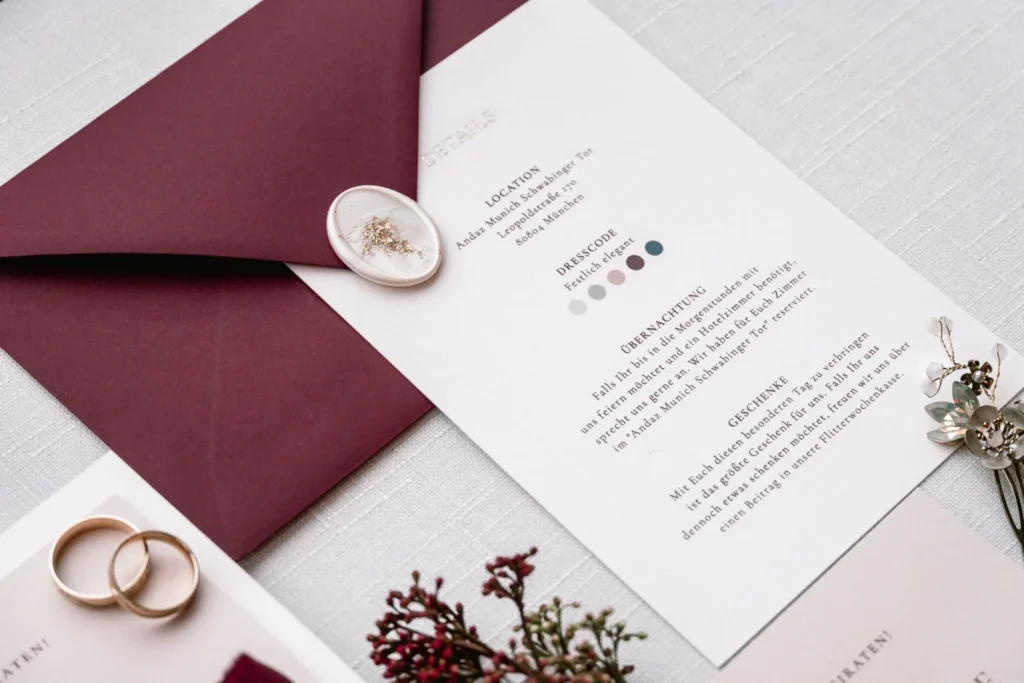
Handmade paper is traditionally crafted by hand, often using historical techniques that have been applied for centuries. This ancient art of ‘papermaking’ creates a connection to the past and brings a nostalgic atmosphere to your wedding stationery.
Handmade paper is characterized by its unique texture and structure. The irregular edges (deckle edge), visible fibers, and natural variations in the paper give it a rustic and charming character. The distinctive feel of handmade paper will delight your guests and appeal to their senses.
As handmade paper (as the name suggests) is made by hand, each sheet is unique. It is available in various colors and often even has elements like flower petals, plant and herb seeds incorporated. The paper can then be planted in a pot and with some patience and a lot of love, a small plant will grow from it.
Handmade paper is made from natural and sustainable materials, such as recycled textile fibers, plant fibers, paper or cotton scraps. Compared to conventional paper, it is more environmentally friendly and has a smaller ecological footprint.
Handmade paper offers a canvas for artistic design. It is suitable for various printing techniques such as letterpress, embossing, or digital printing. Additionally, you can paint the paper by hand, stamp it, or decorate it with calligraphy to add an individual and artistic touch.
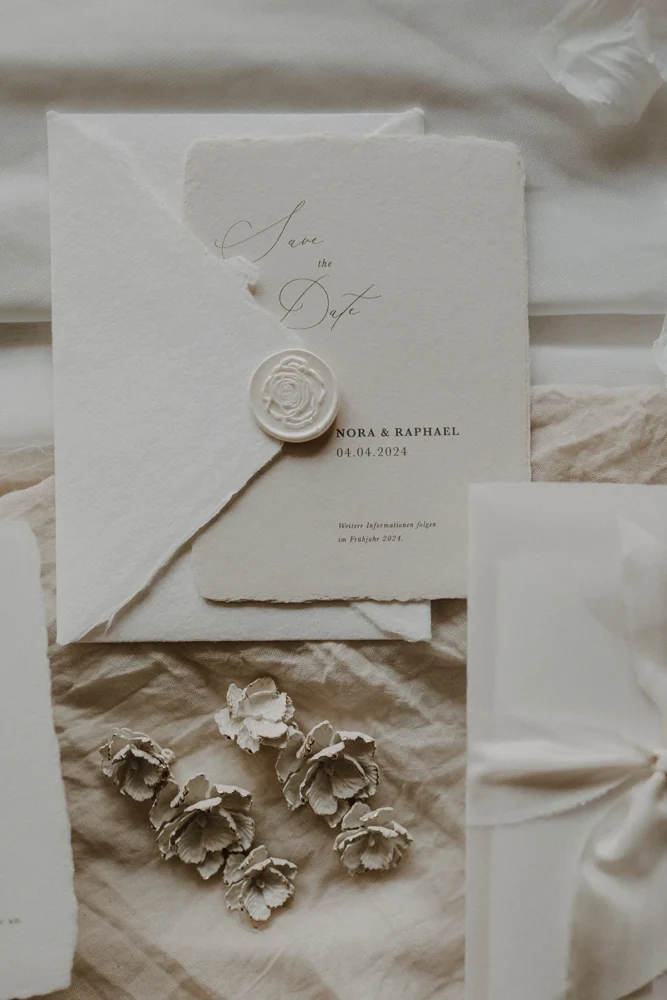
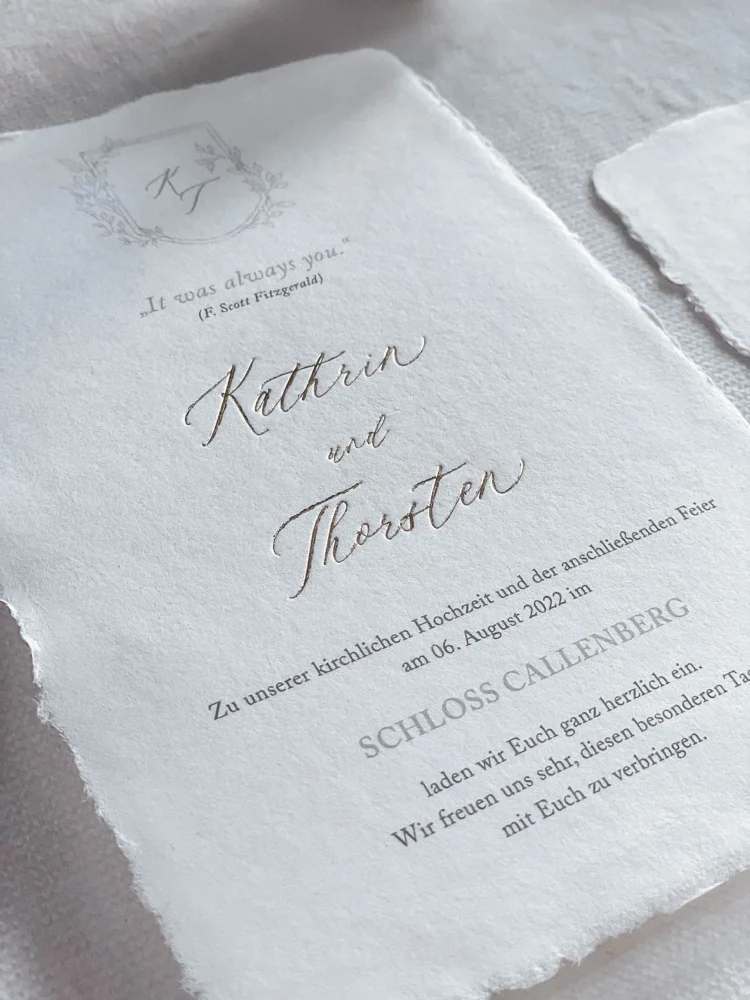
Furthermore, there are many other types of paper: glossy, metallic, uncoated, coated, laminated, and more. However, discussing all of these would be beyond the scope here.
I hope I could give you a little help with this insight in choosing the right paper for your invitation cards, etc. When my wedding couples visit me in my studio, I’m happy to present them with the complete paper selection. If couples live further away, I send them a small package with various papers that match their ideas and style.
Paper is something you simply have to feel. The most beautiful design won’t have the right effect if the paper it’s printed on doesn’t match.